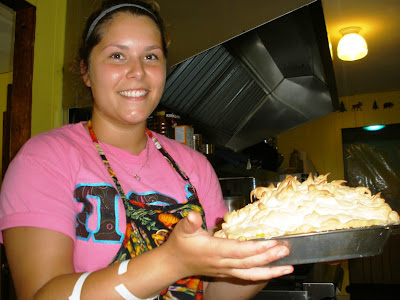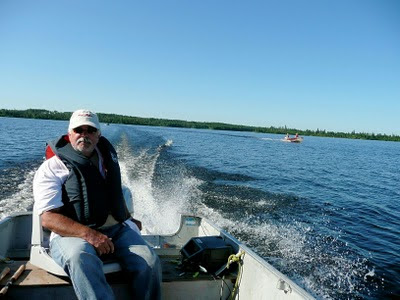
I am an advocate for using small sizes of fishing line, within reason, as readers of this blog are probably aware. See
Lighten Up for Northern Pike as an example.
In fact the 8# mono in this photo is the exact line I use for northern pike fishing and for walleye.
My family from the States that comes to camp each July are all expert pike fishermen and they also use 8# mono. Each of them catches multiple pike in the 35-45 inch range and you know what? No one loses any fish because their line breaks!
We just keep our drags set so the fish can pull out line, with resistance, so the breaking point of the line is never reached.
Because the line is so light we are able to cast the small lures that end up catching us all the pike.
If we were to use stronger line then we would not catch so many fish.
This is where braided line comes into the picture. Braided line is smaller by diameter than mono; so, for the same diameter you can have a much stronger line. However, the line is also much more visible than monofilament. Therefore the fish can see it better and this can make some fish shy away from your lure.
It's normally not much of a problem with northern pike but it definitely is a factor when fishing with bait for walleye. I heard an outdoor writer one time point out that none of the anglers on the professional walleye tournament circuits uses braided line.
Where braided line really outperforms mono is not its strength (because mono's strength is just not an issue) but its sensitivity. Braided line does not stretch while mono stretches a great deal.
If you like to troll and have a lot of line in the water behind the boat, braided line lets you feel your lure or sinker bump the bottom as well as the slightest bite. It also lets you set the hook better under these conditions.
If you have a lot of mono trailing behind the boat you can set the hook and the line just stretches and the hook is not jerked into the mouth of the fish. Eventually the fish can just open its mouth and the lure falls out. But even here frequently the fish sets the hook itself when it strikes the lure.
So my advice is that braided line is better for trolling while mono is better for casting and jigging.
You can, of course, add a short mono leader to the end of your braided line if you are worried about the braided line's visibility adversely affecting the fish.
However, anglers who are trolling lures seldom do this. Usually they tie their line right to the lure. Pike have a difficult time cutting the braided line and walleyes don't seem to mind the visibility when you are using lures, just when using live bait.
I also don't like braided for casting because it abrades very easily when the line strikes obstructions like limbs and rocks. So does mono but it just seems more resistant to such abuse.
What I find with most fishermen who use the braided line is that they use the diameter of braided that is the same as the mono they used to fish with. So if they formerly fished with 12# mono they get the braided that is the diameter of 12# mono but is the strength of 30#. The problem with this practice is the 12# braided is very much more visible than the mono. This can mean they catch fewer fish.
Here's an example. A couple of years ago I was out fishing and located a bunch of big northern pike in a bay near camp. I caught and released a 38-incher, caught several small fish and saw many more.
All of this was done on 8# mono.
I told a couple of our guests about the spot and they subsequently fished it for days without catching much of anything although eventually they did get one big pike from there. I was scratching my head wondering why they weren't having the success that my boat did when, at the end of the week, I heard one of the anglers say that the reason they were able to land the one big fish they did hook was because he was using braided line that was 50# test!
They had been fishing with rope!
Click to go back to our website:
Click to see the latest on the blog:












